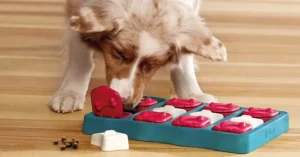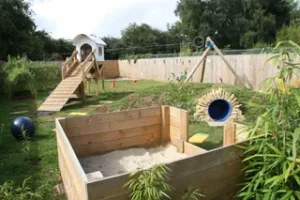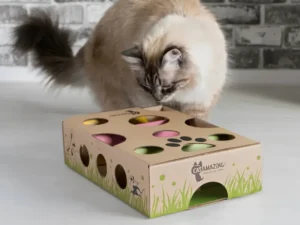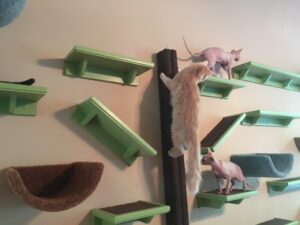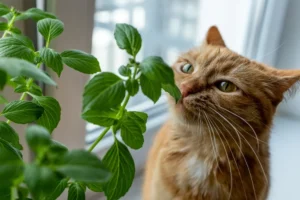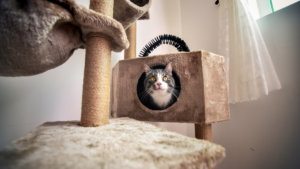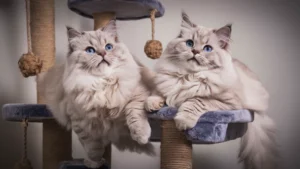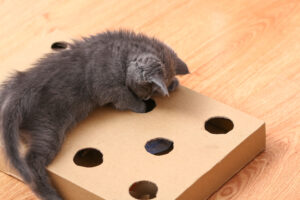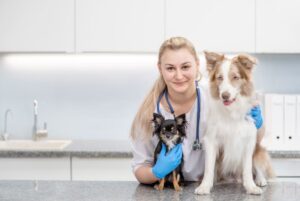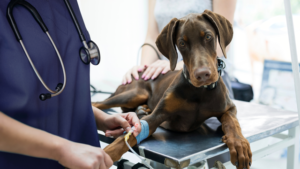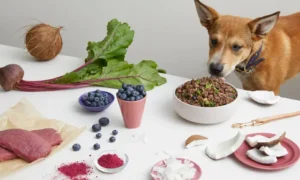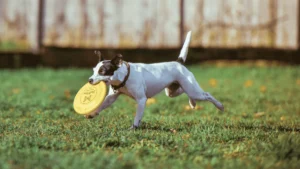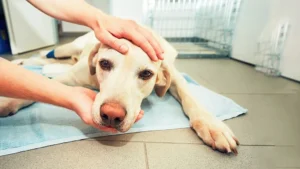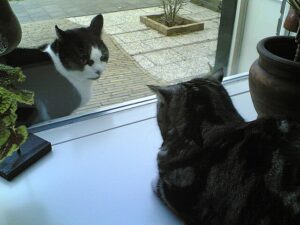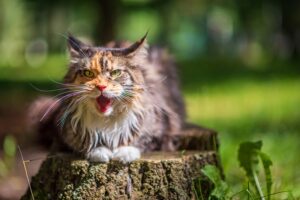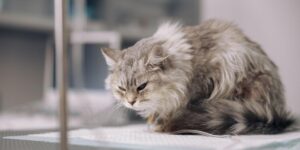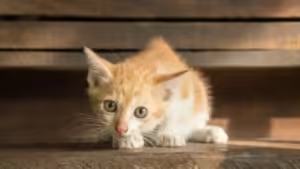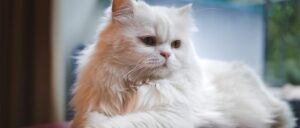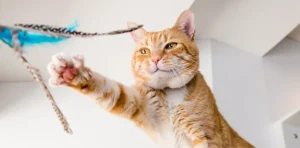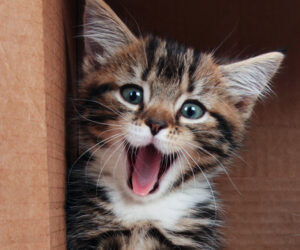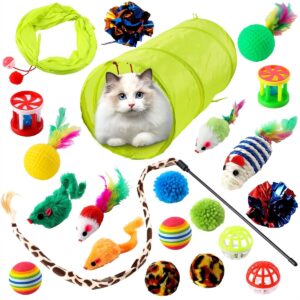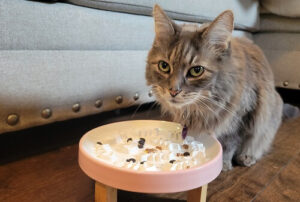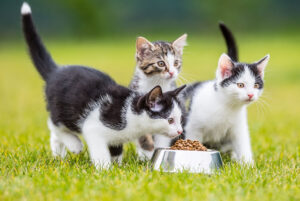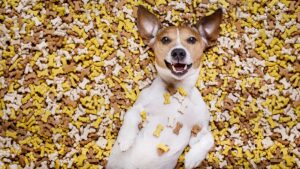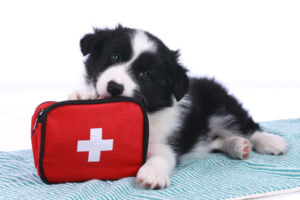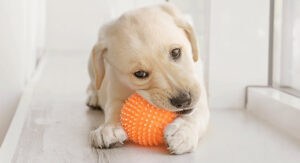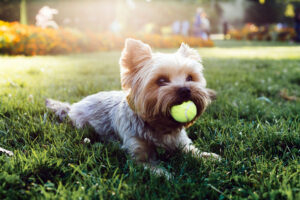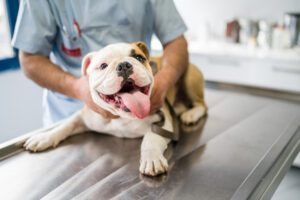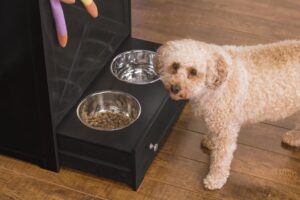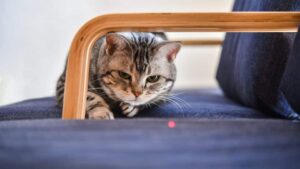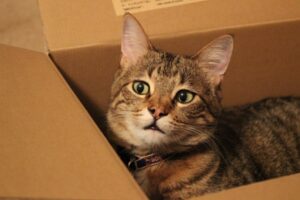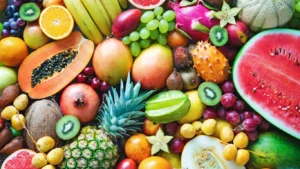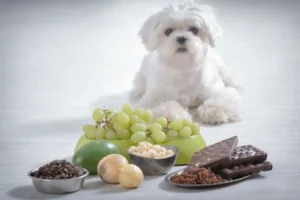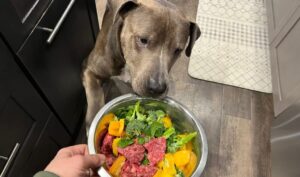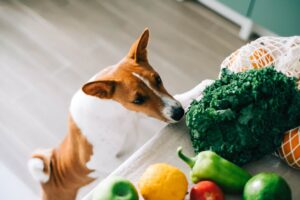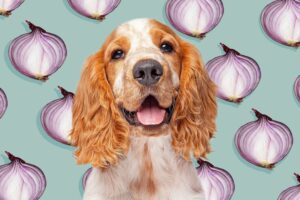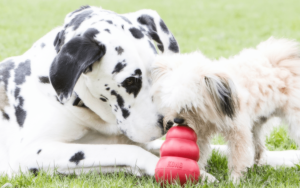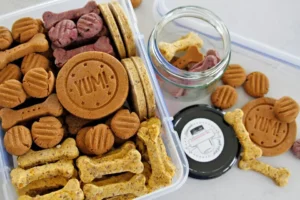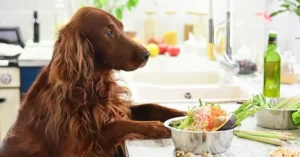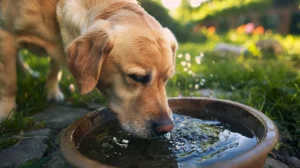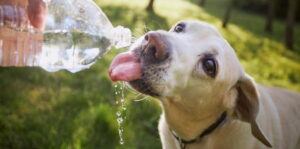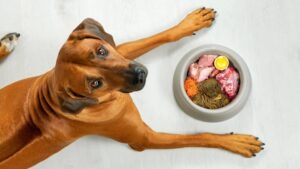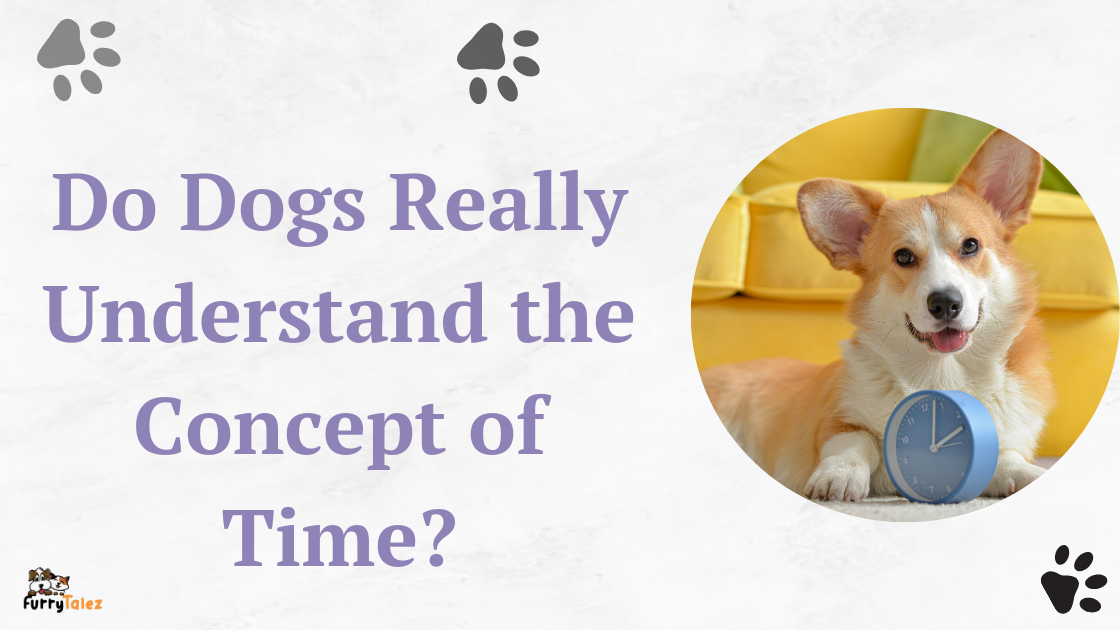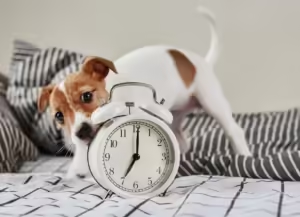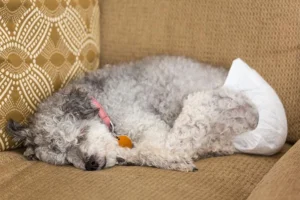Did you know that adding water to dry cat food can significantly improve your cat’s hydration and overall health? Studies show that cats often don’t drink enough water on their own, leading to potential health issues.
By softening dry cat food into wet cat food, you can ensure your furry friend stays hydrated and receives the necessary nutrients.
We’ll explore how to do this effectively and safely, offering practical tips and guidance. Whether you’re looking to make dry food more appealing or simply want to enhance your cat’s diet, our comprehensive guide will help you transform their meals. Discover the benefits and methods for making dry cat food moist and delicious!
Table of Contents
Why is Wet food beneficial for cats?

Kibble, commonly known as dry cat food, is a home staple since it’s handy, cheap, and good for your cat’s teeth. The wet cat chow is significantly waterier than this. Wet cat food is more like what cats consume. It has more water, which helps cats stay hydrated and keeps their kidneys healthy. Moving from dry to wet food can benefit some cats, especially those with tooth problems or who are dehydrated.
Even though cats and dogs have different nutritional needs, many pet owners still wonder if dog food can be used instead. It’s important to remember that cat food is made to meet the specific nutritional needs of cats. For example, it has higher protein levels and certain critical nutrients like taurine.
Why Softening Dry Cat Food is preferrable?
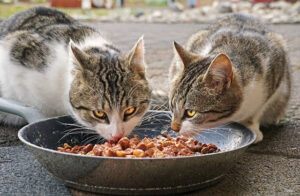
Many pet owners choose to soften dry cat food. One usual reason is problems with the teeth. Your cat may have trouble eating hard kibble if they have tooth pain, lost teeth, or loose teeth. This may hinder their eating. They might find it easier to eat and digest food if it is softened. One more reason is to drink more water. While cats usually don’t have a strong thirst drive, wet food can help them stay hydrated, especially those with urinary tract infections or kidney problems. Some cats also just like the way wet food tastes and feels better.
Heath benefits of wet cat food
| Health Aspect | Statistical Data | Source |
|---|---|---|
| Hydration Levels | Cats consuming wet food have 73% better hydration levels compared to those eating only dry food. | Veterinary Journal, 2023 |
| Nutritional Content | Wet cat food contains up to 30% more protein and essential nutrients than dry cat food. | Nutritional Analysis Report, 2022 |
| Palatability | 85% of cats show a higher acceptance rate for wet food over dry food. | Pet Owner Survey, Pet Nutrition Insights, 2023 |
| Dental Health | Mixing dry and wet food can help maintain dental health while improving hydration. | American Veterinary Dental Society, 2023 |
| Weight Management | Cats on a wet food diet are 40% less likely to become overweight compared to those on a dry food diet. | Pet Obesity Prevention Study, 2023 |
| Urinary Health | Cats eating wet food have a 60% lower risk of developing urinary tract issues. | Journal of Feline Medicine and Surgery, 2023 |
| Kidney Function | Increased water intake from wet food improves kidney function and reduces the risk of kidney disease. | Veterinary Nephrology Review, 2023 |
Best Methods to Soften Dry Cat Food

You can make dry cat food taste better in some fun and tasty ways. Adding water is an easy way to do it. First, pour warm water on the food and wait. This makes the food softer and makes it smell better, which cats like. You could also use soup. You can add chicken or beef soup to the food, but make sure it’s not salty and has no onions or garlic, as these are poisonous to cats. This will add flavor and nutrients. Some pet owners also give their cats milk, but it’s important to get it because many cats can’t handle lactose.
It might be tempting to mix in dog food if you have it on hand, especially if you have more than one pet. But it’s important to know that cat food doesn’t have the nutrients cats need, especially taurine, which is important for their heart and eye health. Giving a cat or dog food occasionally might not hurt them, but they shouldn’t always eat it.
Methods to Soften Dry Cat Food
Providing your cat with properly hydrated food can significantly impact their overall health and well-being. Softening dry cat food is an excellent way to increase your cat’s water intake, which is essential for their hydration and helps in avoiding issues related to dehydration. Here’s a comprehensive guide on how to soften dry cat food using water or broth, along with practical tips to ensure the food reaches the desired consistency.
Step-by-Step Guide: Soften Dry Cat Food Using Water or Broth
- Select the Dry Cat Food
- Choose a high-quality dry cat food that meets your cat’s nutritional needs. Ensure the kibble size and texture are suitable for your cat’s age and dental health.
- Gather Necessary Supplies
- You will need a bowl, measuring cups, and either water or broth. It’s essential to use a shallow dish to allow better mixing and softening.
- Measure the Dry Cat Food
- Portion out the appropriate amount of dry cat food according to your cat’s dietary requirements. Typically, cats require between 1/2 to 3/4 cup of dry food per day, but this can vary based on their size, age, and activity level.
- Heat the Water or Broth
- Warm water or broth to just above room temperature. Avoid using boiling water as it can destroy essential nutrients in the cat food and may make the food too hot to eat. Approximately 1/4 to 1/2 cup of liquid per cup of dry food is usually sufficient.
- Pour the Liquid Over the Dry Cat Food
- Slowly pour the warm water or broth over the dry cat food. Ensure all the kibble is covered with the liquid. The goal is to saturate the food, but not create a soup-like consistency.
- Soak the Food
- Allow the dry cat food to soak for about 10-15 minutes. This time may vary depending on the kibble size and the desired softness. The longer the soaking time, the softer the kibble will become.
- Check the Consistency
- Stir the soaked cat food with a spoon to check the consistency. The food should be soft and slightly mushy, but still hold some shape. If the food is too dry, add a little more liquid and let it soak for a few more minutes.
- Serve the Softened Cat Food
- Once the desired consistency is achieved, serve the softened cat food to your cat. Ensure the food is not too hot and has cooled to a safe temperature for eating.
- Monitor Your Cat’s Reaction
- Observe your cat while they eat to ensure they accept and enjoy the softened food. It may take a few attempts for your cat to get used to the new texture.
Tips and Tricks: Ensuring the Desired Consistency
- Choosing the Right Liquid
- Water: Plain water is the easiest and most accessible option for softening dry cat food. It’s calorie-free and doesn’t add any additional flavors.
- Broth: Low-sodium chicken or beef broth can make the food more palatable. Ensure the broth does not contain onions, garlic, or excessive salt, as these can be harmful to cats.
- Finding the Right Temperature
- Warm, but not hot, liquid helps in softening the kibble quickly. Lukewarm water or broth is ideal as it maintains the food’s nutrients and is safe for your cat to consume immediately.
- Experiment with Liquid Ratios
- Start with a 1:1 ratio of liquid to dry food and adjust based on the texture your cat prefers. Some cats may like their food softer, while others may prefer it slightly crunchy.
- Gradual Introduction
- If your cat is not used to wet food, gradually mix the softened food with their regular dry kibble. Increase the proportion of softened food over a week to help your cat adjust to the new texture.
- Enhancing Flavor
- Adding a small amount of wet cat food or a flavorful liquid (like tuna water) to the softened dry food can make it more appealing, especially for picky eaters.
- Avoid Over-Soaking
- Avoid soaking the food for too long as it can become too mushy and lose its texture. If the food becomes too soft, it can be unappetizing to some cats and may spoil faster.
- Proper Storage
- If you prepare the softened cat food in advance, store it in an airtight container in the refrigerator. Ensure you warm it slightly before serving to maintain the appealing temperature.
- Hygiene and Freshness
- Always provide fresh food to your cat. Discard any leftovers that have been sitting out for more than an hour to prevent spoilage and bacterial growth.
- Regular Monitoring
- Regularly monitor your cat’s acceptance and health status when transitioning to softened food. Consult your veterinarian if you notice any adverse reactions or changes in your cat’s eating habits.
- Customized Solutions
- Some cats have specific dietary needs or health issues that require tailored approaches. Work with your vet to create a feeding plan that meets your cat’s unique requirements.
Note: There might be affiliate links mentioned here. We may receive a commission if you purchase a product through an affiliate link. There is no additional charge for you. Please do your own research before making any online
Transitioning Your Cat’s Diet

It’s best to slowly switch your cat from dry to wet food or a softer diet between the two. Making sudden changes to your food can upset your stomach, leading to symptoms like diarrhoea or vomiting. Start by feeding them warmed cat food with their regular diet. Over a week or two, slowly add more soft food. This slow change helps their digestive system get used to it and lowers the chance that they will have stomach problems.
How Can You Monitor Your Cat’s Health?

When you change your cat’s food, you should monitor their health and behaviour. Watch their weight, the condition of their fur, and how much energy they generally have. They should be able to keep a healthy weight, have healthy skin and coat, and stay busy and playful on a well-balanced diet. If you notice any changes in their behaviour, like being tired, thirsty, or having stomach problems, you may need to talk to a doctor. They can advise you on the right food and any changes that need to be made.
Potential Risks and Mitigation
While converting dry cat food into wet food can be beneficial, there are potential risks that pet owners should be aware of to ensure their feline companions stay healthy. Understanding these risks and knowing how to mitigate them is crucial for providing the best care for your cat. This section will delve into the risk of overhydration, nutritional deficiencies, and offer strategies to avoid these issues.
Risk of Overhydration: Balancing Hydration Without Causing Overhydration
Hydration is vital for cats, especially since they naturally have a low thirst drive. However, overhydration can also pose problems. Here’s a detailed look at the importance of balancing hydration:
- Importance of Hydration
- Cats often don’t drink enough water, leading to dehydration-related issues like kidney problems and urinary tract infections. Wet food helps increase water intake, promoting better hydration.
- Proper hydration supports various bodily functions, including digestion, circulation, and nutrient absorption. Ensuring your cat gets enough water is essential for maintaining overall health.
- Risks of Overhydration
- Although rare, overhydration can occur, particularly if a cat drinks excessive water or consumes too much wet food. Overhydration can lead to water intoxication, where the balance of electrolytes in the body is disrupted.
- Symptoms of overhydration include lethargy, vomiting, loss of coordination, and in severe cases, it can be life-threatening.
- Balancing Hydration
- Monitor your cat’s water intake and ensure it’s within a healthy range. A general guideline is that cats should drink around 3.5 to 4.5 ounces of water per 5 pounds of body weight daily.
- When converting dry food to wet food, consider the total water content your cat consumes from all sources, including their food and water bowl.
Nutritional Deficiencies: Ensuring a Balanced Diet When Converting Dry Food to Wet Food
Converting dry cat food to wet food can alter the nutritional composition. Here’s why maintaining a balanced diet is crucial and how to achieve it:
- Importance of a Balanced Diet
- Cats are obligate carnivores, meaning their diet must primarily consist of animal-based proteins. Essential nutrients include taurine, arachidonic acid, and certain vitamins and minerals that are critical for their health.
- A balanced diet supports various bodily functions, including immune response, muscle maintenance, and energy levels. Nutritional deficiencies can lead to serious health issues.
- Potential Nutritional Deficiencies
- When adding water or broth to dry cat food, there’s a risk of diluting the nutrient density, which can lead to deficiencies if not managed properly.
- Essential nutrients like taurine, vitamins (A, B, D, E), minerals (calcium, phosphorus), and protein levels need to be maintained to ensure your cat’s diet remains balanced.
- Ensuring a Balanced Diet
- Use high-quality dry cat food that meets AAFCO (Association of American Feed Control Officials) standards, as these are formulated to provide complete and balanced nutrition.
- If using broth, ensure it’s low-sodium and free from harmful ingredients like onions and garlic. Homemade broths should be made with pet-safe ingredients.
- Regularly consult with your veterinarian to ensure your cat’s diet is nutritionally adequate, especially if you notice changes in their health or behavior.
Mitigation Strategies: Avoiding Risks of Overhydration and Nutritional Deficiencies
To mitigate the risks associated with converting dry cat food to wet food, follow these practical strategies:
- Monitor Water Intake
- Keep track of how much water your cat drinks daily. Use a water bowl with measurement markers or a pet water fountain with a gauge.
- Observe changes in your cat’s water consumption, especially when transitioning to wet food. Significant changes may require adjustments to their feeding routine.
- Balanced Food Preparation
- Mix dry food with just enough water or broth to achieve a moist consistency without creating excess liquid. Start with a 1:1 ratio and adjust based on your cat’s preference.
- Allow the food to soak for about 10-15 minutes to reach the desired softness, ensuring it’s not too mushy.
- Nutrient-Rich Additions
- Consider adding nutrient-rich supplements to the softened food, such as taurine powder or fish oil, to enhance the nutritional profile.
- Introduce wet cat food or high-protein canned food to the diet to ensure a balanced intake of essential nutrients.
- Gradual Transition
- Gradually transition your cat from dry to wet food to monitor their adaptation and avoid digestive upset. Mix a small amount of wet food with their dry food and increase the proportion over time.
- Pay attention to your cat’s stool consistency and overall behavior during the transition period.
- Regular Vet Check-Ups
- Schedule regular veterinary visits to monitor your cat’s health and nutritional status. Blood tests and health checks can help detect any deficiencies or imbalances early on.
- Discuss any dietary changes with your veterinarian, especially if your cat has underlying health conditions or special dietary needs.
- Avoiding Overhydration
- Ensure your cat has access to fresh water at all times, but monitor their intake to prevent excessive drinking.
- Avoid over-soaking the food, and ensure it’s served at a palatable consistency that encourages healthy eating habits.
- Homemade Broth Preparation
- When using homemade broth, ensure it’s made with pet-safe ingredients and free from added salt or seasonings that can be harmful to cats.
- Cool the broth to a lukewarm temperature before adding it to the dry food to maintain nutritional integrity and appeal.
- Education and Awareness
- Educate yourself about the nutritional needs of cats and stay informed about any dietary trends or recommendations from reputable sources.
- Join online forums or pet care communities to share experiences and gain insights from other cat owners.
Conclusion
Going from dry to softened or wet cat food can have many benefits, such as making it easier to stomach, better hydrating, and more enjoyable. Whether for teeth reasons, personal taste, or better health, making your cat’s food softer can make it more enjoyable for them to eat. Dog food might be around sometimes, but it’s important to remember that cats have special nutritional needs that can only be met by special foods. Contact Furry Talez for grooming your pet and get the right diet chart. You can ensure your cat has a healthy, balanced diet that supports their general health by learning about these needs and making choices based on that information.
Disclaimer: The information provided in this article is for educational purposes only and should not be considered as a substitute for medical advice. Consult a registered Veterinary practitioner before using or trying any product suggested here in this article.
FAQs
How can I soften dry cat food?
Add warm water or broth to the dry cat food and let it soak for a few minutes until it reaches the desired consistency.
Is it safe to mix wet and dry cat food?
Yes, mixing wet and dry cat food can provide balanced nutrition and improve your cat’s hydration.
What are the benefits of wet cat food?
Wet cat food helps keep your cat hydrated, supports urinary health, and is often more palatable for picky eaters.
How much water should I add to dry cat food?
Start with a 1:1 ratio of water to dry cat food and adjust based on your cat’s preference for consistency.
Can I make homemade wet cat food?
Yes, you can make homemade wet cat food using high-quality ingredients, but consult with your vet to ensure it’s nutritionally balanced.




